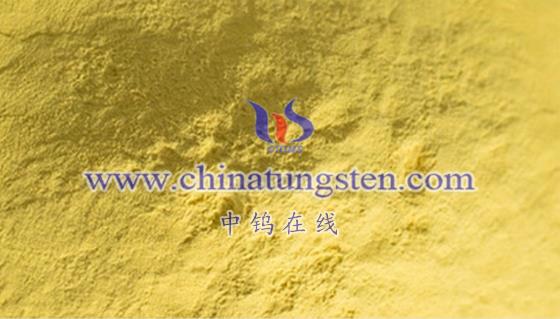
The elements that have the greatest impact on the performance of tungsten oxide nanomaterials depend on the type of performance to be enhanced (such as gas sensitivity, humidity sensitivity, photoelectric performance, etc.) and the specific application scenario. Below is an overview of the influence of common element doping on the performance of tungsten oxide nanomaterials:
- Alkali Metal Elements (such as Li, K, Na)
- Gas Sensitivity
Doping alkali metals into the tungsten oxide lattice creates more structural defects, which can adsorb more gas molecules (such as NO₂), increasing electron mobility and adsorbed oxygen content. This significantly improves the gas-sensing performance of tungsten oxide nanomaterials. For example, lithium-doped 3DOM WO₃ nanomaterials exhibit a significantly increased gas-sensing response to NO₂ at the optimal operating temperature, with high sensitivity even at room temperature. - Humidity Sensitivity
Alkali metal doping can also improve the humidity sensitivity of tungsten oxide nanomaterials by promoting the adsorption and dissociation of water molecules on the material’s surface, enhancing conductivity and the material’s response to humidity.
- Gas Sensitivity
- Rare Earth Elements (such as Gd³⁺)
- Photoelectric Performance
Doping with rare earth elements can enhance the light absorption ability of tungsten oxide nanomaterials, especially in the near-infrared region. Additionally, rare earth element doping may improve charge separation, making it easier for electrons to participate in redox reactions during photodynamic processes, thus improving the photoelectric performance of the material.
- Photoelectric Performance
- Transition Metal Elements (such as V, Mo, Fe)
- Electrical Properties
Doping with transition metals can adjust the electrical properties of tungsten oxide nanomaterials by changing carrier concentration, mobility, and other parameters, thus affecting the material’s resistivity and conductivity. - Thermal Stability and Oxidation Resistance
Doping with certain transition metal elements can also improve the thermal stability and oxidation resistance of tungsten oxide nanomaterials, helping maintain their performance in high-temperature environments.
- Electrical Properties
- Noble Metal Elements (such as Pt, Pd)
- Catalytic Properties
Noble metal elements deposited on the surface of tungsten oxide nanomaterials can form catalytic active sites that promote the adsorption and reaction of gas molecules, thereby improving the material’s gas-sensing and catalytic properties.
- Catalytic Properties
- Other Elements
In addition to the aforementioned elements, other elements (such as Al, Si, Sn) may also influence the performance of tungsten oxide nanomaterials, but the extent and mechanism of the impact may vary depending on the type and doping amount of the element.
The impact of doping on the performance of tungsten oxide nanomaterials is complex and varied. Doping with different elements can have a significant effect on different properties of the material. Therefore, when selecting doping elements, it is essential to consider the specific application requirements and the type of performance enhancement desired. The control of doping amounts is also crucial, as excessive or insufficient doping can lead to poor material performance. Since doping effects are influenced by multiple factors (such as doping methods, preparation processes, and material purity), experimental optimization of doping conditions is required in practical applications to achieve the best performance enhancement.
More details of tungsten oxide product, please visit website: tungsten-oxide.com
Please contact CHINATUNGSTEN for inquiry and order of tungsten oxide:
Email: sales@chinatungsten.com
Tel.: 86 592 5129595















